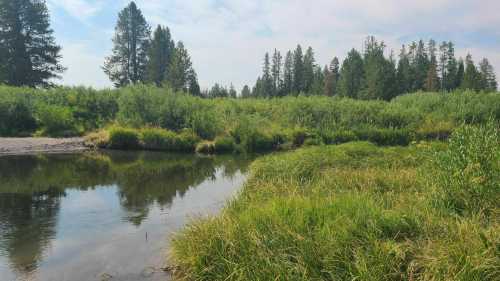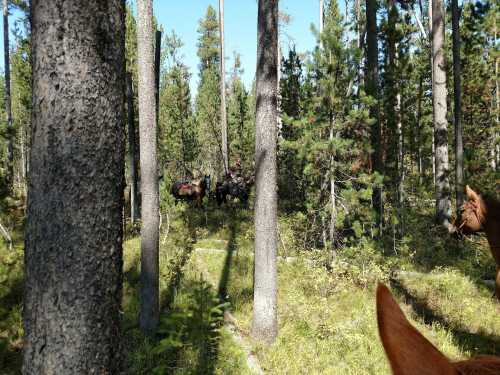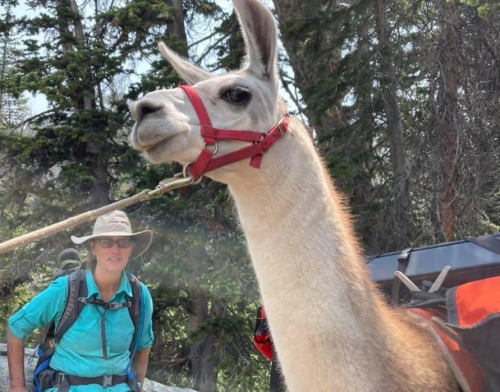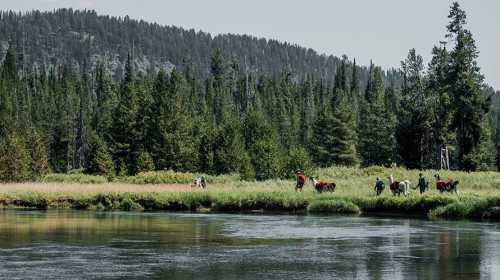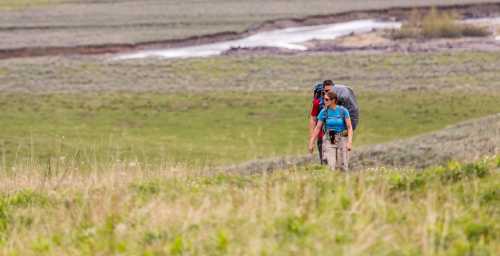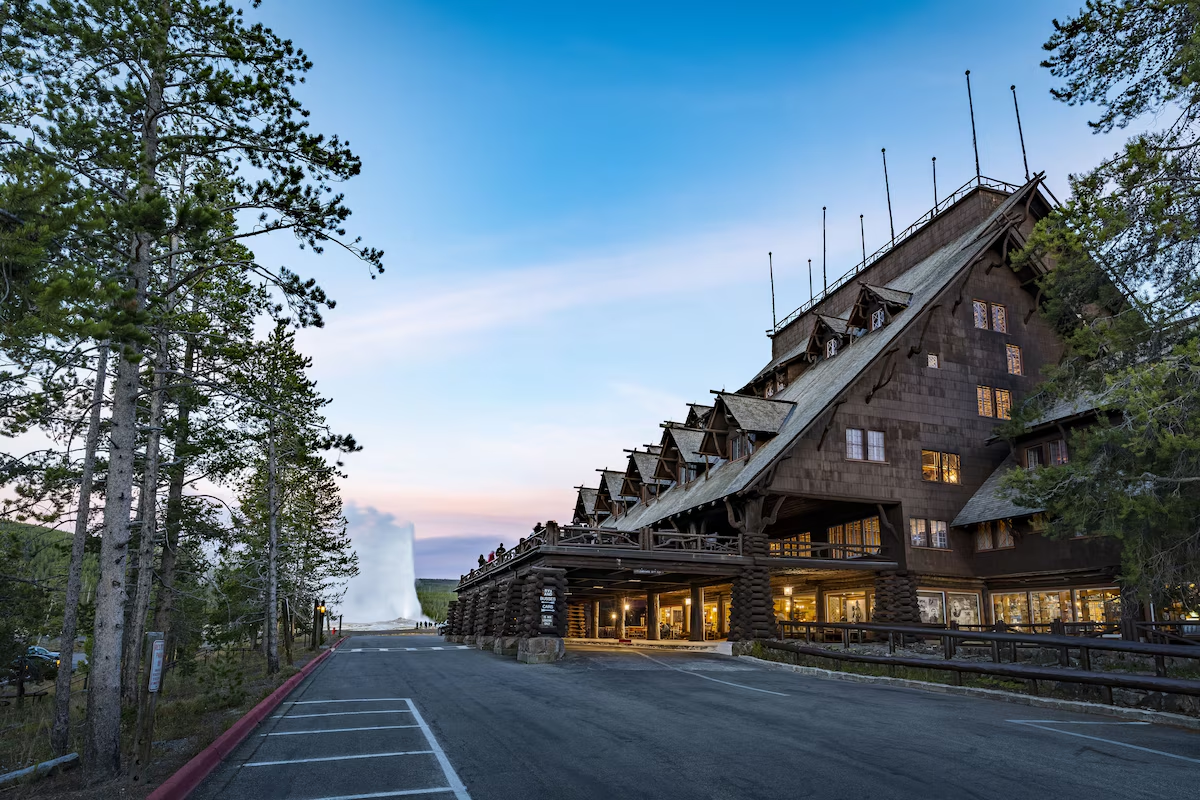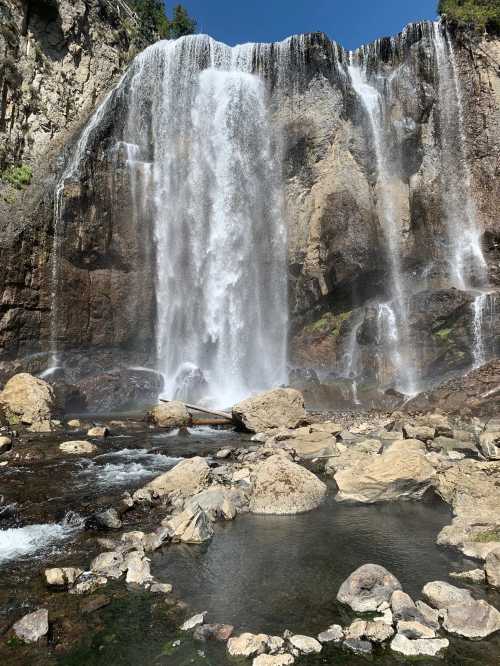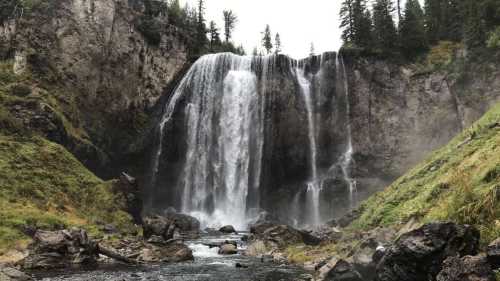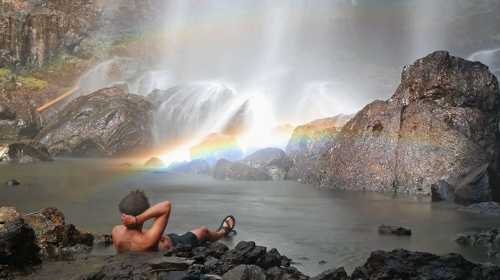Recently, MSN released a list of the most stunning national parks in the world. These parks each feature remarkable landscape, history, and wildlife - and each one truly deserves their spot. It may come as no surprise that the two national parks in Wyoming both made the list - they are among the most beautiful parks in the world.
In any season, a visit to Grand Teton National Park (pictured below) or Yellowstone National Park is sure to showcase stunning, breathtaking scenery.
The wildlife spotting here is among the best in the world.
Can you spot a young moose in the photo above, taken on a chilly morning at Schwabacher's Landing (GTNP)?
In Yellowstone, the Hayden Valley (pictured) and Lamar Valley are both home to so many species, they're known as the Serengeti of North America.
Visit at dawn or dusk to have a chance of spotting wolves and bears, two of the most notorious predators in the parks.
While some of the wildlife can be elusive, you're certain to see Bison in Yellowstone. These creatures went from being nearly extinct to once again roaming the land.
There are so many American Bison in the Greater Yellowstone Ecosystem that now it's a common occurrence to get caught in a traffic "bison jam" and wait for these beasts to clear the road.
Foxes and Coyotes are often fairly easy to spot, if you're patient. The fox in this photo has a bit of a tragic story worth sharing - it stresses the importance of minimizing human impact on the land.
In 2021, a photographer was accused of feeding foxes in order to draw them closer for staged photos. Because of ongoing actions like this, some foxes have gotten habituated to humans, and begin to cause trouble. Though it is no fault of their own, this often ends in the animal's euthanization. Shortly after the photographer incident, a fox was put down. The sleepy vixen pictured above had lost her mate.Stories like this one are the tragic outcome of humans disregarding rules within the park, so if you do visit, please be sure to keep your distance from wildlife and follow the Leave No Trace principals.
Moose are all over Grand Teton National Park, and many who camp in the Gros Ventre area wake up to these enormous, dangerous animals walking through their campsite. Be sure to keep your distance!
Moose are fascinating to watch from a distance. Did you know they shed their antlers in the fall, so by winter time both cows and bulls have bare heads?
While wildlife viewing is certainly one thing that draws visitors to Yellowstone, the park's unique thermal features may be the main attraction.
Famously colorful, Grand Prismatic Spring may be one of the most famous natural wonders in the world!
There are more geysers, springs, and hot spots in Yellowstone than in every other place on Earth combined.
This includes Old Faithful Geyser, which erupts on a predictable schedule, and Steamboat Geyser, which is harder to predict but shows off the largest geyser eruptions in the world.
Visitors can walk through geyser basins on boardwalk trails, which protect the delicate regions and protect visitors as well.
Despite well-maintained infrastructure, some tourists who ignore the rules and warnings and wander off the boardwalks have fallen to their death into these superheated springs. Remember, park rules are there for your safety!
Yellowstone's thermal features are the result of an enormous volcano eruption and collapse millions of years ago.
Today, the remnants of the eruption are everywhere. You can even see the caldera rim from many places in the park, and landmarks like Pumice Point on Yellowstone Lake (pictured) and the Petrified Trees in Lamar Valley show how the forces permanently shaped the landscape.
Beyond the wildlife and the thermal features, Yellowstone offers some of the most stunning scenery you can find.
There are dozens of waterfalls within the park boundaries. Some, like Undine Falls, are easy to locate, while others require backcountry treks.
The most well known falls, the Upper and Lower Falls of the Yellowstone, can be seen from various viewpoints and overlooks at the Grand Canyon of the Yellowstone River.
Both parks offer plenty of history. While Yellowstone's history is mostly geologic, the park's most famous building is the Old Faithful Inn.
It was built in 1903 and to this day remains the largest log cabin in the world. Book a room here or visit for a delicious dinner.
Grand Teton National Park is located on land that was easier to develop, and therefore there are more historic structures scattered on the park land.
The famous Moulton Barns on Mormon Row are among the most popular landmarks in the park.
One of the lesser known landmarks, the Cunningham Cabin, is a scenic homestead that's been reclaimed by nature.
Other historic structures in the park include the Menors Ferry district and the Chapel of the Transfiguration.
Grand Teton National Park offers remarkable overlooks and scenery. Many of these places were first shown to the world through the works of Ansel Adams.
Adams was one of the world's most famous photographers. He captured scenes from the American West, including iconic depictions of the Snake River and Teton Range.
The Snake River is an important waterway that flows from Idaho into the Jackson Hole Valley.
It supports a great number of species and provides recreation and fishing opportunities for visitors. You can book a scenic float trip or whitewater trip from local outfitters in the town of Jackson.
Grand Teton National Park also offers one of the most famous and noteworthy hiking trails in the country - the trek into Cascade Canyon.
It begins with a boat ride across beautiful Jenny Lake. When you get to the other side of the lake, the Tetons tower above you.
The moderate trek into Cascade Canyon is a must-do for any visitor. There is nothing quite like the sight you'll see when you round the bend and the canyon opens up before your eyes.
Many hikers continue on through the Canyon and camp at Lake Solitude, located about seven miles from the lake shore.
Other popular hikes in Grand Teton National Park include the rock scramble to Delta Lake, the easy walk to Taggart Lake, and the long but fun trek around Phelps Lake, where you can jump from a natural "diving board" into the chilly alpine water.
More adventurous hikers and climbers can summit Disappointment Peak, Buck Mountain, and all three of the Tetons - South, Middle, and the Grand. Other than the Grand Teton, which requires alpine experience and is best done with a guide, the summits listed above are not particularly technical, and can be reached with some scrambling.
All it takes is one visit to Grand Teton National Park and Yellowstone National Park to understand why they were named among the most stunning in the world.
We are so lucky to have these wonders in our own backyard!
Before visiting Yellowstone, Grand Teton, or any of the National Parks on the list, be sure to review Leave No Trace principles. It is extremely important to become a good steward of the landscape!
It's also important to note that while we think of these places as "pristine" and "untouched" wild areas, they have been home to indigenous tribes for far longer than we often realize. For information about the Shoshone native to the Grand Teton area, visit this website.
Subscribe to our newsletter
Get the latest updates and news
Thank you for subscribing!










































